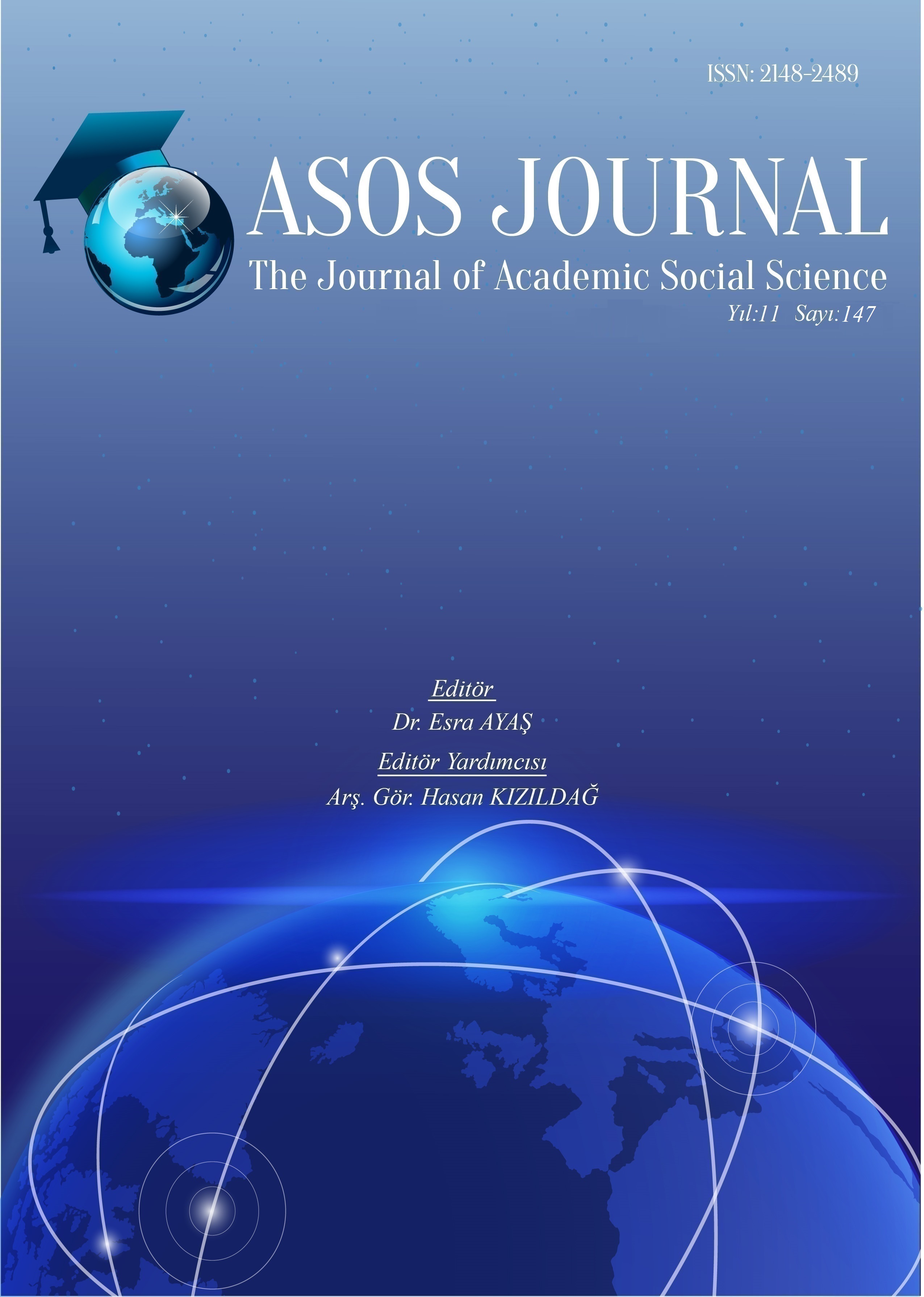Author :
Abstract
Aristoteles’in Poetika’sından çağdaş tiyatro uygulamalarına kadar uzanan çizgide zaman mefhumu tiyatro sanatı açısından önemli bir belirleyici olmuştur. Gerek hikâyenin anlatılacağı süreyi belirlemede gerekse de oynandığı zamanla hikâyenin geçtiği zaman arasındaki bağda doğrusal bir zaman algısının öne çıktığı gözlenir. Bu algının temelleri klasik fizik olarak bilinen Newton mekaniğinde yatmaktadır. 20.yy’ın başlarında ortaya atılan Parçacık Fiziği, nam-ı diğer Kuantum teorisi, insanlığın varoluş algısını kökten sarsmıştır. Teorinin 21.yy’ın başlarından itibaren her şeyi açıklamakta kullanılan bir metodolojiye dönüştüğü gözlenir. Yaşamın aynası olan tiyatro sanatı da olasılık teoremi olarak da bilinen Kuantum kuramından faydalanmaya, onu kendisine dolaylı ya da direk olarak konu ya da araç edinmeye başlamıştır. Bu eğilimin bir sonucu olarak Avrupa tiyatrosunda onlarca çağdaş metin yazıldığı söylenebilir. Araştırmanın amacı çağdaş tiyatroda disiplinlerarası yaklaşımların estetik çerçevesini ortaya koymaktır. Araştırmada dramatik metin analizi bir doküman analiz yöntemi olarak kullanılmıştır. Bu araştırmada model alınan Romen asıllı Fransız yazar Matié Visniec’in Pandaların Hikâyesi oyunu Heisenberg’in belirsizlik ilkesi, Schrödinger’in Kedisi deneyi, olasılık ve rastlantı teorileri gibi Kuantum teorisinin temel öğelerini içinde barındırmaktadır. Oyun bu bağlamda çağdaş bireyin varoluşsal sorularını sahneden seslendirmektedir. Sonuç olarak bu çalışma tiyatro sanatının çağın insanına ulaşmak ve onun varoluş serüvenine eşlik etmek için tiyatronun gösterdiği çabayı Kuantum Teorisi üzerinden Pandaların Hikâyesi modeliyle incelemeyi amaçlamaktadır.
Keywords
Abstract
From Aristotle's Poetics to contemporary theatre practice, the concept of time has been an important determinant of the art of theatre. It is observed that a linear perception of time comes to the fore both in determining the duration of the story to be told and in the relationship between the time of the play and the time of the story. The foundations of this perception lie in Newtonian mechanics, known as classical physics. At the beginning of the 20th century, particle physics, also known as quantum theory, radically shook humanity's perception of existence. Since the beginning of the 21st century, this theory has become a methodology for explaining everything. The art of theatre, which is the mirror of life, has also begun to benefit from Quantum Theory, also known as the Theorem of Probability, and to take it as its subject or tool, either directly or indirectly. As a result of this tendency, it can be said that dozens of contemporary texts have been written in European theatre. The aim of the research is to reveal the aesthetic framework of interdisciplinary approaches in contemporary theatre. The research used dramatic text analysis as a method of document analysis. The play The Story of Pandas by Matié Visniec, a French writer of Romanian origin, which is the model for this research, contains the basic elements of quantum theory, such as Heisenberg's uncertainty principle, Schrödinger's cat experiment, probability and coincidence theories. In this context, the play voices the existential questions of the contemporary individual from the stage. As a result, this study aims to examine the efforts of theatre art to reach the people of today and to accompany their existential adventure with the model of The Story of the Pandas through Quantum Theory.





